





GRAPHIC BY ALEXANDRA NACKLEY // CONTRIBUTOR







GRAPHIC BY ALEXANDRA NACKLEY // CONTRIBUTOR
The dismissal in the politics of those emotionally impacted by the Israeli-Palestinian conflict.
BY GINANE DESLAURIERS AND JIA MARGUERITE SCHOFER STAFF WRITER AND ASSISTANT NEWS EDITOR
@ginane_dlrs // @jiamarguerite
As a child, Sarah Sokkar followed her revolutionary uncle through the streets of Cairo during the Egyptian Revolution. But it was only at the age of six that she first felt afraid and surveilled at a border crossing in Gaza.
“It’s like constantly being worried about what you’re do-
ing and who’s watching you because you don’t want to make [a] mistake,” she said.
This memory is a constant reminder of the complexities of her identity.
“Over the last year, it’s been a lot of crying in silence or crying in private,” said Sarah Sokkar, a Concordian Lebanese-Palestin-
ian English and history student.
As death tolls rise in the Middle East, news of mass killings and destruction has become routine, and polarized debates often ignore the emotions of those affected.
Constantly scrolling through violent videos risks desensitizing distant observers of the
INVESTIGATION:
How transparent is Concordia? pg. 2
SPORTS Athletes, not accessories pg. 6
LES PAGES FRANCOS
La Note des bois, une coop en souffrance pg. 8
ARTS & CULTURE
More room for mushrooms pg. 11
MUSIC
Behind the mask: The power of transformation in music pg. 13
Haunted house for all pg. 15
decades-long conflict, leaving many to privately process emotions drowned by political noise.
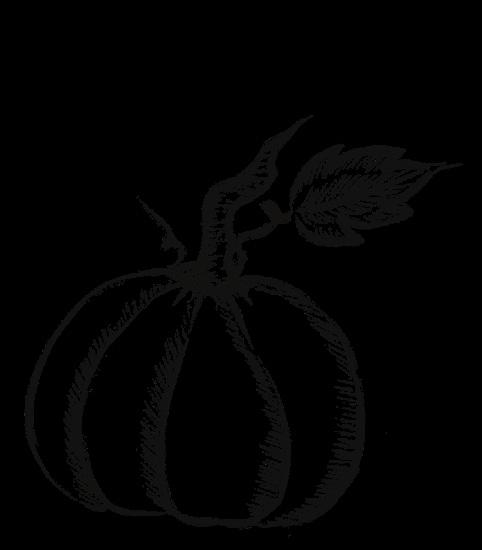
One thing we weren’t expecting as secondyear journalism students? Getting a legal letter from a lawyer representing our university.
BY MARIEKE GLORIEUX-
STRYCKMAN AND EMMA MEGELAS
EDITOR-IN-CHIEF AND MANAGING
EDITOR
A bit more than a year ago, as I stepped onto the 105 bus heading to the Loyola campus, I opened my inbox to find an email from a lawyer representing Concordia.
I was expecting an email from the university around that time,
but not this one. The Concordian news team, then led by Emma Megelas and myself, had filed a number of Access to Information (ATI) requests to Concordia a few weeks prior.
This is a common practice in journalism, a way for reporters to get access to documentation held by public institutions such as universities. At the time in my second year of journalism, I was learning the ins and outs of access to information in class, and I wanted to both put that knowledge into practice, and look into possibilities of deeper, investigative stories for the news section.
By that point, we had filed the ATIs to Concordia and received an acknowledgement of receipt. As the deadline to send documents was approaching, we had been checking our inbox regularly, hoping to get started on our research.
This email wasn’t the re -
sponse we were waiting for. As I opened the attachment, the words “UNIVERSITÉ CONCORDIA c. MARIEKE GLORIEUX-STRYCKMAN et EMMA MEGELAS” jumped out to me.
This was a cease-and-desist letter, signed by a partner and co-leader of the National Privacy and Cybersecurity Practice group at Fasken, one of Canada’s largest law firms. It claimed that our requests were “abusive and made in bad faith,” and that we were using access to information as a “means of pressuring the University.”
The access requests we had filed related to complaints about the Concordia shuttle, reports about increased tuition, information about the home countries of Concordia’s international students, security reports, professional emails produced by Concordia spokes-
person Vannina Maestracci, and decisions sent out following previous ATI requests filed to Concordia.
To be sure, these requests were too broad — they had been filed, out of curiosity for the inner workings of their university, by two students who had entered the world of journalism a few months prior. We had expected correspondence with Concordia to clarify what documents we were asking for, a common practice for public institutions that we’ve experienced many times since this event.
We instead entered a lengthy legal process, for which our student newspaper could not afford legal representation.
To be clear, these requests were not made in bad faith. To us, this seems obvious. For the university to send lawyers after its student-run press, without first reaching out to us about
Canadian universities often fail to meet access to information requirements, leaving their students in the dark.
BY AIDAN RAYNOR AND MARIEKE GLORIEUXSTRYCKMAN STAFF WRITER AND EDITOR-INCHIEF
From January 2021 to May 2023, Concordia received 116 access requests for information held by the university. Those requests ranged from questions about security and harassment complaints in the Stingers football team to statistics on sexual assault complaints and academic sanctions.
These access to information (ATI) request files remained open for 52 days on average. So, how does Concordia’s transparency stack up compared to other Canadian universities?
Through their work at the Students’ Society of McGill University (SSMU), VP University Affairs Abe Berglas has overseen many information requests filed to McGill, including requests about policy, budgets and security.
They say they’ve seen an increasing reluctance from their
university to provide internal information.
“Student representatives are positioned to provide accountability to the university,” they explained. “We’re also asked to explain a lot of McGill’s quite confusing bureaucracy, and both of these things are hard to do when we have limited information.”
Institutional transparency has always been challenging for journalists, elected officials, and other democratic actors. Projects like the Globe and Mail’s Secret Canada or the Investigative Journalism Foundation exist to ensure Canadians get access to information about the biggest, and sometimes most opaque, institutions in the country.
But universities often fly under the radar.
“I’ve seen these kinds of audits for federal and provincial governments. I’ve seen them for municipal governments, but I’ve not seen one for universities,” said Dean Beeby, a freelance investigative journalist, freedom-of-information specialist, and transparency advocate.
Secret Canada has compiled the largest database of ATI requests made to public institutions across Canada. Of their 375,000 requests, only 1,205 are requests made to universities.
Based on documents obtained by the Concordian, there
are lengthy delays around the release of information to the public at Canadian universities. The number of requests filed to these institutions between January 2021 and May 2023 ranged from over 300 at Memorial University of Newfoundland to seven at Yukon University. On average, some universities’ files were closed after two days, while others remained open for 176 days.
In that period, ATI files at Concordia were open for an average of 52 days, starting with the reception of the request. The extended deadline to respond to an ATI request in Quebec is 30 days. Most of Concordia’s ATI files were closed after that deadline.
In an email, Concordia spokesperson Vannina Maestracci said that this time frame did not necessarily represent the length it took the university to provide documents in response to an ATI request. She said files sometimes remain open after a response is sent.
When asked for further data on the frequency of these files remaining open after a response is sent out, Maestracci said retrieving that information would take a few weeks.
Concordia’s files are open, on average, for longer than those of other universities in Montreal.
“Universities are like micro-societies,” said Justin Vaillancourt, Information Director
the ATI requests, is deeply disappointing.
The conflict was eventually resolved in mediation, teaching us a lot about ATIs along the way. From this experience was born the investigation you can read in this issue, exploring transparency in Canadian universities.
Access to information laws were put in place to provide Canadians with the tools to hold their institutions accountable for the way they are run. They have led to many journalistic investigations, but they also allow anyone to hold a light up to governments, public health institutions, and many more.
In a time of misinformation and polarization, it is crucial that this goal of transparency is upheld, and that any individual be able to access information in accordance with the spirit of Canada’s ATI laws, including student press.
at UQAM’s newspaper Montréal Campus. “We need people who will look into what’s going on in those societies in the same way people look into what’s going on in the bigger society. And these [legal] mechanisms, they exist to protect students, and to protect student democracy.”
Information requests are made possible through access to information legislation across provinces that allows Canadians to access information held by public institutions. These laws date back to the 1980s, around the time when the federal government passed the Access to Information Act (ATIA).
“The genius of the Access to Information Act and all of these freedom of information legislations was it empowered ordinary people, citizens, to command information,” said Beeby.
“Transparency with public institutions is the foundation of our democracy,”
he added.
Beeby has been working with Canada’s vast and convoluted access to information system since the ATIA first came about. He described it as “the golden era” for governmental transparency.
Access requests helped Beeby investigate the removal of 2SLGBTQI+ members of the Canadian Armed Forces and the federal public service. Universities fall under the provincial access to information legislation, which varies between provinces.
Newfoundland and Labrador has one of the most transparent governments that force public bodies to publish requests made to their institution. This openness is apparent at Memorial University in St. John’s, which publishes all access requests they receive on their website.
In Saskatchewan, public bodies don’t need to track access requests.
Since the creation of these access to information laws, Beeby says governments and public institutions became more legally savvy in finding “ways to subvert the law or to find ways to act against the spirit of the law, which was openness and transparency.”
According to data compiled by Secret Canada, the average processing time for access to information requests is 122 days


in Ontario, 25 days in Quebec, and 67 days in BC. Those responses don’t always lead to data, as institutions can invoke exceptions like privacy and industrial secrets to avoid giving away information.
Data gathered by the Concordian about previous ATI requests filed to over 40 Canadian universities shows that UBC is the university where ATI files are open the longest, with an average of 176 days.
According to the government of British Columbia’s website, documents should be shared within 30 days of receiving the freedom of information (FOI) request. FOI is a term some provinces use instead of ATI.
“In the last two years, we filed 10 FOIs. [...] We got seven of them, and only one of them on time,” said Iman Janmohamed, editor-in-chief of UBC’s the Ubyssey.
She explained that it is difficult to rely on access to information requests due to their timeline.
UBC did not respond in time for publication.
For Vaillancourt, knowing the complexity of the ATI process has led him to avoid filing these requests to UQAM when he could.
“Which is unfortunate because that mechanism was put in place so we could have access to information,” he said. “But at the moment, it’s working in a way that discourages us from having access to information.”
Every province has a commission to settle disputes relating to access to information. In Quebec, the Commission d’Accès à l’Information (CAI) works with requesters and institutions to ensure the law is followed.
But filing an appeal with the CAI can prolong the process for months and sometimes years. According to their latest report, the average processing time of complaints and investigations relating to access to information was 490 days in 2023-2024.
Berglas hasn’t been shy when it comes to requesting information from McGill. More and more, they said they’ve seen the university wait until the deadline before issuing a response.
Berglas also said they are seeing more refused requests, which the university justifies by citing exceptions outlined in the law. They’ve considered appealing decisions to the CAI.
“In hindsight, I think I should have been appealing more,” Berglas said. “I think the idea of a legal process is very scary to people, especially the notion that you might need a lawyer, and you need to start thinking about getting a lawyer; [it] has been very dissuasive for me personally.”
They are currently working on creating a database that will bring together the responses to ATI requests filed to McGill.
McGill did not respond to the Concordian’s request for more information on their ATI procedure.
At Concordia, the access and privacy officer has refused to process students’ ATI requests filed in the context of journalism classes.
“Given our limited resources, we have asked that the University’s resources not be further strained by class assignments in order to prioritize meeting our obligations under the law regarding ATIs,” said Maestracci.
Under access to information laws, anyone can request information, for any reason.
According to documents obtained by the Concordian, Concordia had five open cases with the CAI in 2023, two of which began in 2022 and one of which involved the Concordian. They spent $12,059.68 on legal fees related to these cases in 2023, seeking representation from law firms Chenette Litigation Boutique Inc. and Fasken Martineau DuMoulin LLP.
CONCORDIA’S ACCESS TO INFORMATION
ATI requests aren’t the only way in which universities can share information with students and the wider public.
“There’s a lot of different forms of communication,” said Maestracci. “There’s obviously internal communication to our students, to our faculty, to our staff. There are press releases that are being put out on research that is done at Concordia.”
In her case, Maestracci is in
charge of answering the media. Spokespeople are often the public-facing voice of the university and the first point of contact for reporters.
Vaillancourt said he’s had good experiences with UQAM’s media relations team overall.
“What I find unfortunate,” he said, “is that when we make media requests or when we have questions about our university, we’re able to get answers because we’re journalists. But for students who have questions about the university, it becomes more complicated to have access to information.”
Similarly, Berglas said they have privileged access to information as a student representative.
“I do often get responses to my emails,” they said. “I find that sometimes, answers can be quite vague. I do often pre-
fer to have the documents themselves. So oftentimes, I will kind of skip the process of asking and go straight to an ATI request.”
Recent decisions in Canada are making some advocates fear the country is moving away from transparency. In February 2024, the Supreme Court ruled that memos sent to Ministers by the Premier are exempt from disclosure.
“Improvements in [freedom of information] laws have come normally with a change of government,” said Beeby. “It’s with a new government trying to show that it’s a new broom and that it’s open and transparent, and that’s going to be the best chance I think we have for meaningful reform.”
To Berglas, anyone at the university should be able to request information. They pointed out that universities might receive less access to information requests if they preemptively made more information, including policies, available online.
Vaillancourt echoed the importance of a functional access to information system.
“It takes people who are transparent, procedures that are transparent, so that we understand how things are happening, how things work, how decisions are made,” he said. “If we don’t have access to that, it’s unfortunate for students. I think I have a right to know what’s going on in my university.”
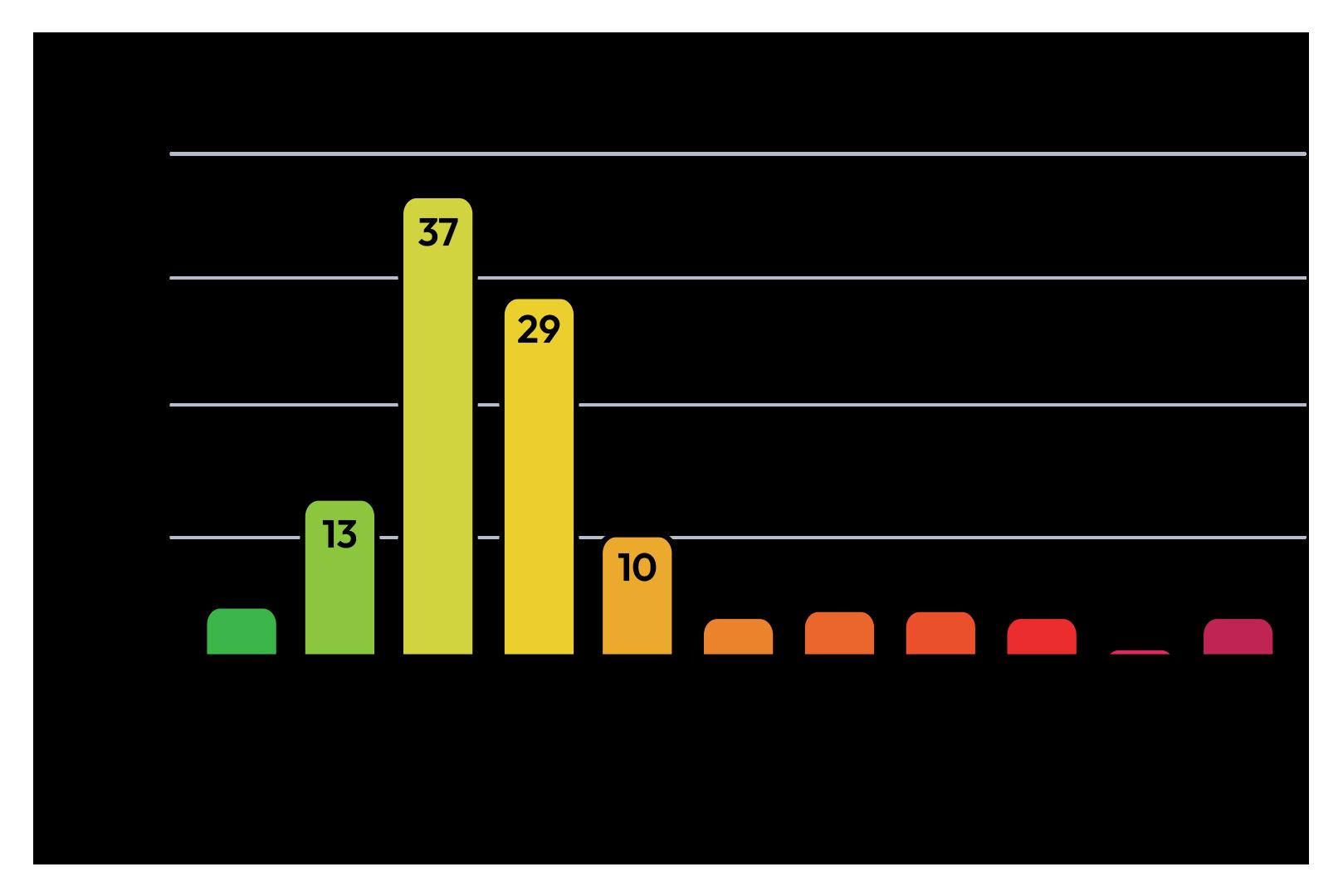


“A friend of mine [...] would say something very opinionated, a very hot take in my presence without acknowledging how that might make me feel,” said Mikaela Barry, a Jewish student at Concordia.
Multiple students said that their emotional suffering pales to the millions dying daily.
“I’ll be fine,” said Hisham Abu Akleh*, a Palestinian living in Canada. When people ask how he is doing, he answers, “Don’t focus on me; focus on what’s happening to them.”
Abu Akleh’s father often told him stories of growing up in Gaza.
“How it was on the water, and they’d go to the beach in the morning. Fishermen would bring in fresh fish,” he said, grieving 24 family members and a home he was never able to visit.
“For them, it was like a safe haven,” he said.
Having been raised in a Jewish household, Barry feels she had a different connection to this situation than some of her friends.
“What I thought and felt and knew to be true was being actively and openly contradicted almost everywhere I turned,” she said.

Barry shared that the emotional toll of the sit -
uation on her friendships was discussed weekly in her therapy sessions.
Anya Khalimov, a Jewish Concordia psychology graduate student, grew up in a family with pro-Israel beliefs. She often hears them talking in ways she deems disrespectful towards Palestinians and their supporters.
“I feel like it subconsciously creates a distance for me,” said Khalimov. “There’s great grief in shame.”
It makes her feel detached from her heritage and country and ashamed of her support for Palestine.
Khalimov noted that being exposed to violent content on Instagram daily takes a toll on her mental well-being. She mentioned feeling guilty if she stopped keeping up with the news.
“If I’m not suffering as much as I can for their sake by keeping informed, then I’m doing something wrong. I’m being selfish, and I’m sitting in my privilege,” she said.
Other students shared this difficulty in balancing the emotional relief of distance from constant exposure and the guilt of the absence of news.
“How could I have had this much fun doing something when the people I love are in danger and so many people are dying?” wondered Sokkar.
Sokkar started obsessively watching the news, hoping for reassurance.
“If I just watch long enough, someone will come out and say they’ve reached a ceasefire … but it never came,” she said.
In the past year, more and more people have started using clothing and accessories as a way of showing support for victims of the conflict.
“I’m always happy to see posters, stickers, or little pins and other people, non-Arabs, wearing keffiyehs,” said Sokkar, explaining that it gives her a sense of courage.
But when identity became a target for hate speech, Sokkar expressed her fear of being la belled “the angry Arab.”
Wearing visible sym bols also comes at the cost of allowing exter nal views to assume misconstrued ideas.
“My brothers wear a Star of David necklace,” said Aviel Ben-Yehuda, a Jew ish student, noting that they often take them off before going to school, fearing what their peers
might project onto that symbol. He added that religious identities are not exempt from the distortion of reality.
“Judaism is more about loving each other than it is about hating each other,” said Ben-Yehuda. “I feel like a lot of people don’t see that. And I see a lot of Jewish people not feeling that as well.”
Being a first-generation immigrant, Khalimov noted how hard it is to distance herself from her Israeli heritage.
“Ethnic ties are so valuable, and it’s painful to have that emotional resistance to a home country,” she said.
However, this distance can obstruct communication with some politically opinionated people. She sometimes avoids discussing certain topics with her parents.
“It’s a privileged thing to say, but it’s hard to take that emotional toll at times,” she said.
Ben-Yehuda highlighted
holds strong beliefs about this situation.
Alessia Melo, a Lebanese Concordia student at the John Molson School of Business, shared her fear of talking about this with her best friend because of their opposing views, and her inability to cut her out of her life.
“There would just be that lingering anger, though, that I’ll have to deal with,” she said.
The constant divisive dialogue surrounding the Israeli -Palestinian conflict results in being stuck between the weight of political opinion and identity. In turn, an internal battle between empathy and self-preservation takes place.
“It feels like hope has been ripped out of my hands,” shared Khalimov.

Guilt and grief enable a sense of moral and emotional responsibility that is impossible to fear away — she feels the need to suffer because she believes it to be “the only way for there to be penance for being associated with the oppressive side.”
Many shared a feeling of responsibility to live with the emotional charge. “I always tried to remind myself, ‘Don’t forget about them,’” said Abu Akleh.
A new study by a Concordia professor explores the key factors affecting the Canadian real estate market.
BY ANA ACOSTA CONTRIBUTOR
From Vancouver to Toronto to Montreal, renters are feeling the pressure from soaring prices. Housing options are shrinking, leading to an affordability crisis. Why is this happening, and what can be done?
A recent study by Concordia finance professor Erkan Yönder, in collaboration with real estate investment company Equiton, breaks down the reasons behind the surge in rent prices.
“In the end, it is really a problem of supply and demand,”
Yönder explained. “Canada brings in thousands of new people every year, but we don't give them enough houses or units; we don't build enough.”
According to the study, only 424 housing units exist for every 1,000 residents, making Canada the least-supplied housing market among the G7 countries (Canada, France, Germany, Italy, Japan, the United Kingdom, and the USA). For example, rent prices are expected to increase by 26 per cent in Toronto and by 52 per cent in Vancouver by 2027.
Yönder encourages the establishment of local policies that could help shift this outcome.
One of the key ways to solve the supply and demand problem, according to Yönder, is to encourage people to move to less populated areas in the country.
“There should be attractive jobs in other provinces to balance the population so that we spread the demand and decrease the pressure on one location,” he said.
For many Canadians, these numbers aren’t just statistics: they’re a lived reality.
Samuel Chavolla, a mechanical engineering student at McGill, has been renting for three years.
“I’ve lived in multiple places while being here, but I've definitely seen a huge change in the rent that is hard to maintain as a student,” he said.
Over the summer of 2023, his rent at a student residence went from $720 to $800.
“In my current apartment, I'm paying $1200, which would have been unattainable if I hadn't found a full-time job,” he said.
Chavolla’s experience reflects the findings of Yönder’s study: rent pressures that don’t seem to ease, even in cities with rental regulations like Montreal.
Concordia Political Science Assistant Professor Dr. Donal Gill echoed the importance of balancing housing affordability. He noted that Canada's infrastructure needs to expand at the same rate as its rapidly growing population.
“The basic economics are simple: if you don't keep building houses, but as the population increases, the price of rent is going to go up very straightforwardly,” said Gil. “The federal government has allowed a
rapid increase in immigration without sufficient planning for housing, health, and social services, leaving many questioning whether we’re truly prepared for this scale of growth.”
Gill also said that expanding job opportunities for newcomers could help balance housing demand.
“We know that immigration is good for the country and the economy,” he said. “The problem with immigration in Canada is that we create too many barriers between qualified immigrants and them practicing their trades. ”
Canada’s rental market crisis won’t be solved overnight. Yönder’s research suggests that the country needs a comprehensive approach, faster building rates, local job growth, and smarter immigration policies that align with available housing.

The sexual health outreach campaign aims to normalize STI testing and make it part of one’s routine, like going to the dentist.
MANOJ SUBRAMANIAM STAFF WRITER
Concordia Health Services Clinic organized a sexually transmitted infection (STI) testing mobile clinic, “Pee to See, Swab to Know,” on Oct. 23 in the atrium of the EV Building.
During this second event of the semester, 30 people were tested for chlamydia and gonorrhea, two of the most common sexually transmitted infections, according to Gaby Szabo, a registered nurse and a health promotion specialist at the Health Services Clinic.
The testing campaign
was brought to the university by Health Services in 2016, taking inspiration from other universities.
“We started once a semester; it was popular and wellreceived. [Then we did] twice a semester, and now we’re aiming for three times this semester,” said
Szabo.
According to the Sex Lives Report 2024, which was published earlier this month by Toronto-based charity LetsStopAIDS, STIs have been on the rise in Canada, with six per cent of young Canadians, age 18 to 24, having been diagnosed with an STI in the past six months compared to two per cent in the
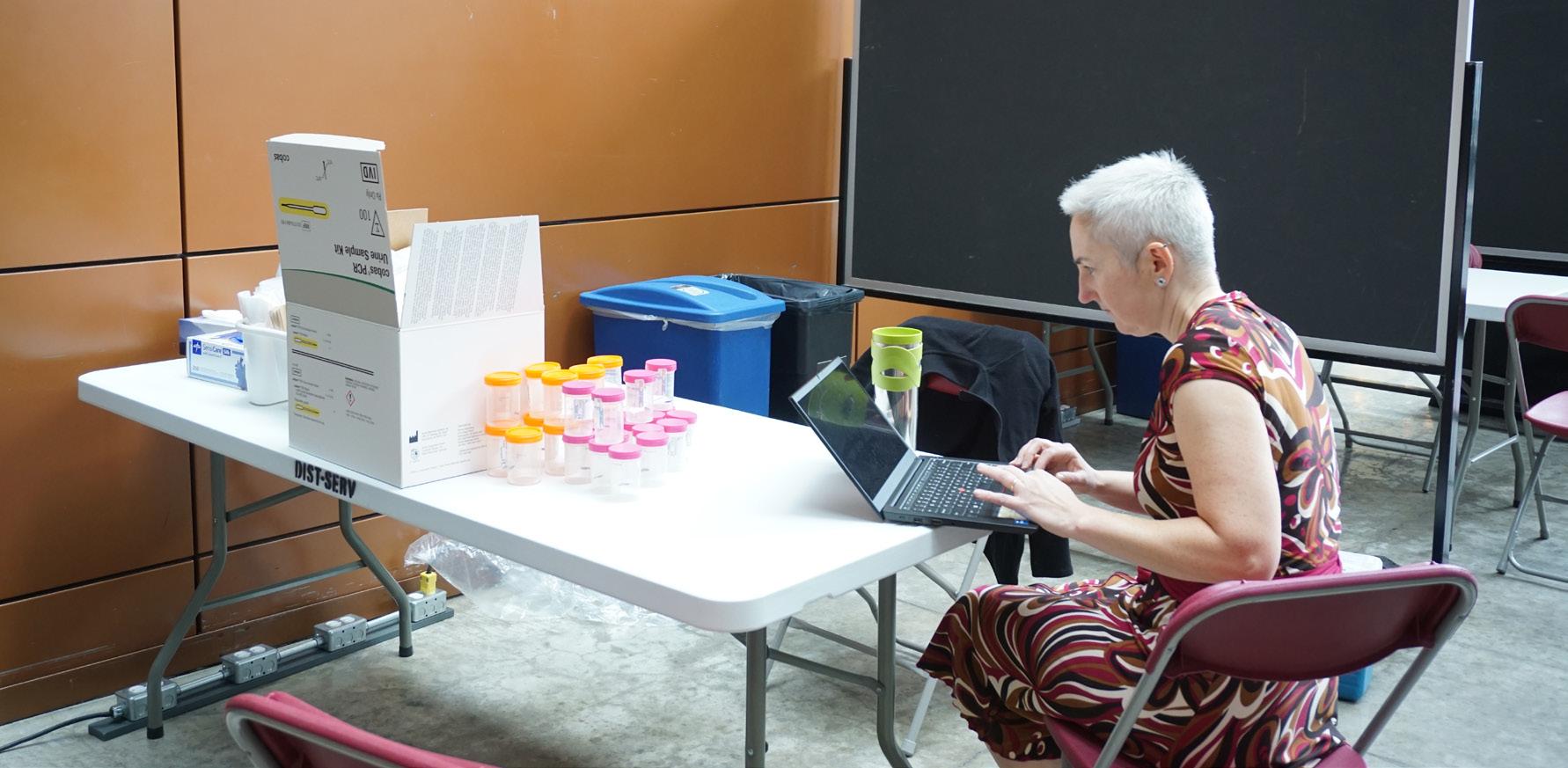
2023 report.
It also noted that about 67 per cent of young Canadians have never been tested for an STI, and equal numbers stated that their healthcare providers did not proactively discuss STI and HIV testing with them.
At the pop-up clinic, participants registered, then met with a nurse to collect the testing materials and get instructions on how to collect the samples. The participants were given a follow-up appointment to get their test results.
Erika, a fourth-year undergraduate student who asked to use an alias for privacy, appreciated the convenience of the pop-up clinic compared to services she tried to access
through ClicSanté, which often took weeks or months to book an appointment.
“[My follow-up appointment] was in less than a month. My standards are low, but it’s pretty good,” she said, smiling.
The pop-up clinic’s open layout and location were chosen on purpose to destigmatize STIs and testing, explained Szabo.
“When students walk by and they see their classmates lining up to get tested […] that has a really powerful impact on just normalizing that this is just something you do as part of taking care of yourself,” she said.
Kim Erin, a first-year creative writing student who passed by to get information
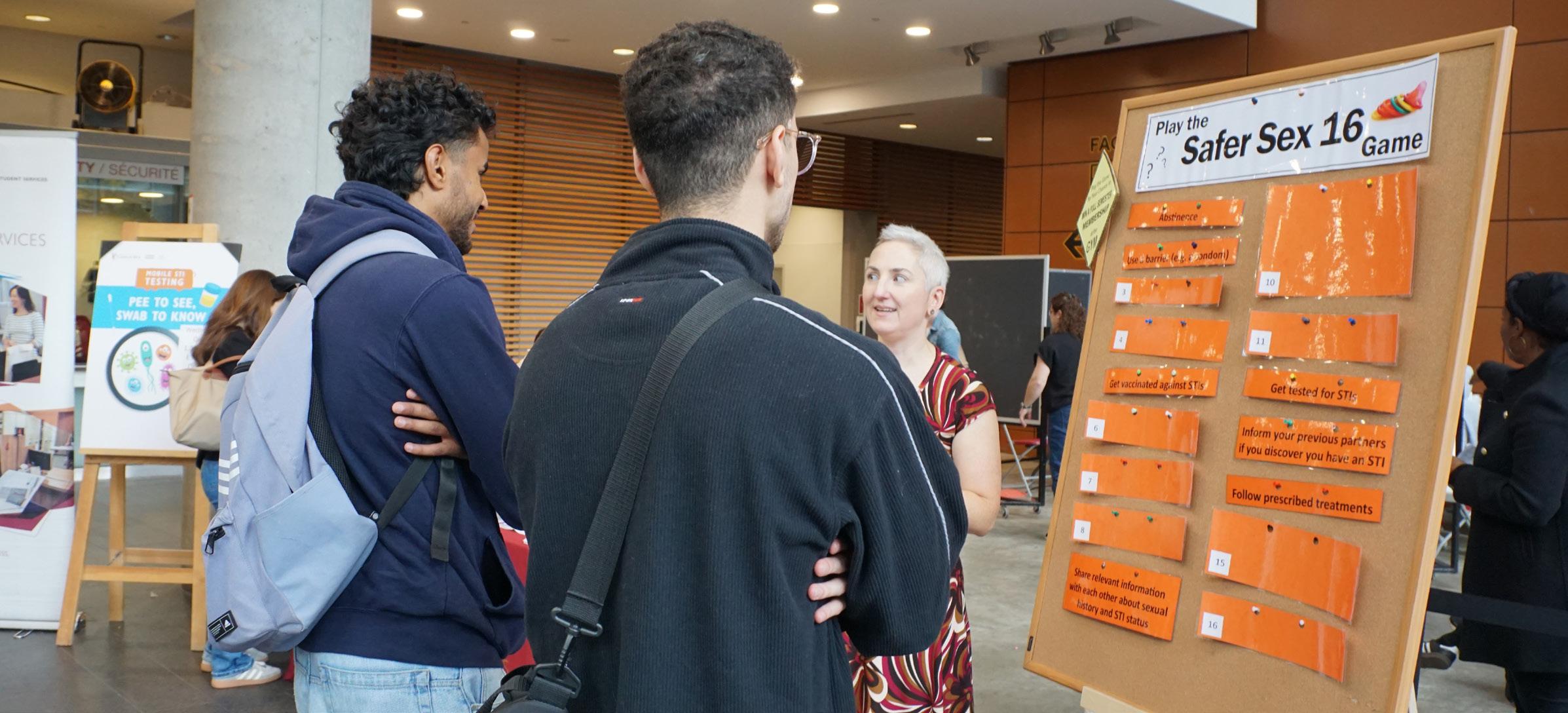
about a vaccine, does not recall learning much about STIs and testing in her high school sex education classes.
In Szabo’s own experience in teaching sex education classes, she has seen the range of knowledge widely, including some misconceptions.
“I think the most common misconception is that if a person doesn’t have symptoms that they’re okay, they’re ‘clean,’ [but] absolutely not,” she said. A person can have no symptoms, but their body is still experiencing damage and harm from an infection. This is why it’s so important for your STI testing to be part of your routine; it’s just something you do every six to 12 months.”
While the LetsStopAIDS report highlighted the ongoing stigma around STIs, with about 70 per cent stating that conversations about them were very challenging, Szabo said the younger people she came across were more open.
Multiple participants said there was less of a taboo among their friends compared to older generations.
“I’ve never had anyone my age be like, ‘yuck!’” Erika said. “Sex gets better when you know that it’s safe and that the [other] person has been tested.”
In addition to the pop-up clinics, which are held a few times per semester, students can also book an appointment at the clinic year-round for testing. They can also get vaccinated against HPV and other STIs at the clinic.
“Cheerleading is more than just entertainment — it is a demanding sport”
BY MEGAN MILLS DEVOE CONTRIBUTOR
As athletes in a female-dominated sport, cheerleaders have long had to fight for recognition. At Concordia, it’s no different.
Concordia is one of the only universities in Montreal without a competitive cheerleading team. Head cheer coach Monica Knaapen and assistant coach Fatouma Guindo are trying to change that.
“[Our] goal is to demonstrate that cheerleading is more than just entertainment — it is a demanding sport,” said Guindo. Currently, the team operates as a club under the Concordia Student Union (CSU) and is not licensed as a Stingers team. Without official recognition as a varsity team, Concordia cheerleaders cannot compete in their own sport.
“Concordia is just a little late to the game when it comes to cheer,” said Knaapen.“We are in the works of it with athletics because athletics is very, very supportive of us.”
According to Knaapen, the team’s status is primarily a financial issue within Concordia’s athletics department. “Our uniforms are really expensive. The training, the gym…” said Knaapen. “We have to work with what we have becaus it’s expensive.”
Steph Medalsy first became interested in collegiate cheerleading as a way to find community at Concordia. Now, as a team member and advisor who assists her coaches, she expressed feeling let down by the lack of competitive opportunities.
“I would absolutely be interested [in competing], given the opportunity,” said Medalsy. “It’s disappointing, but we are not giving up. We continue to make strides every day to get there.”
While continuing to fight for varsity status, the team is staying competition-ready with four to nine hours of weekly training. This training ranges from choreography to conditioning to learning and mastering elaborate stunts. Knaapen said she often feels that there’s an impression her team does not work as hard as the men they share the field with.
“We do, we train, we train just as hard,” said Knaapen. A feeling echoed by team members.
As head coach, Knaapen said she feels a responsibility to instill a sense of pride among her athletes.
“I want the members on the team to feel like they are athletes because they are,” said Knaapen. “If we want people to take us seriously, we need to take ourselves seriously.”
Concordia’s cheerleaders have been able to connect with other athletes through Swarm, a student organization that promotes Stingers athletics. Knappen said this has opened them up to tremendous support from Concordia’s female athletes.
“Concordia women’s sports are killing it,” said Knaapen. “I like that within [women’s sports at Concordia], everyone supports each other because I feel like there’s this understanding amongst all women that you’re already getting the

short end of the stick for no reason. You want to make a point of uplifting one another.” She believes that female athletes are rarely recognized for their accomplishments until after they have proved themselves, saying: “No one is going to stand right away and clap for you.” To that point, Knappen has made an effort to organize performances for women’s sports events as well as men’s.
Team member and advisor Kaya Marciano said that performing at women’s events has allowed her to experience her sport in a totally new atmosphere.
“Cheering for all-male teams feels almost patriarchal,” she said, “with the men in the spotlight at the center of the field, and the women on the sidelines cheering them on. It’s almost symbolic.”
Beyond building solidarity, performing at women’s sporting events helps frame female athletes as people worth celebrating.
“We must be there to support one another,” said Medalsy. “As cheerleaders, we are representatives of Concordia. We need to set the example that it is important to support all our athletes equally.”
Concordia Stingers reflect on the opportunities a women’s soccer team will offer.
BY MATHILDE COLLS ASSISTANT SPORTS EDITOR
The founding teams of the new women’s soccer Northern Super League (NSL) have been announced. Among them will be a Montreal team, the Montreal Roses FC.
The NSL has been in the works for years, officially announced in 2022 and set to start in 2025. The project, led by sports group Project 8 and retired Canadian international player Diana Matheson, aims to fill a gap in women’s professional soccer in Canada.
The main goal of the NSL is to keep professional Canadian soccer talent local while maintaining the same competitiveness as other top-flight leagues. It presents immense opportunities for female athletes.
“We have never had an op-
portunity to stay close to home.
Female athletes have always been told the only way to play professionally is to get recognized by an American university,” said Concordia Stingers soccer player Emily Douris.
“All the opportunities for players were in Europe and the United States, but not everyone wants to leave Canada or can afford it.”
Montreal Roses FC was founded in July 2023 by businesswoman Isabèle Chevalier and entrepreneur Jean-François Crevier. The club’s logo and name were officially unveiled on Oct. 8, 2024.
The rose symbolizes femininity while honouring the city, as roses are included in Montreal’s coat of arms. Additionally, “roses” is an English and French word, a nod to the city’s two main languages.
According to Stingers soccer player Carolyne Beaudoin, the presence of Montreal Roses FC is a massive stepping stone for the local development of Quebec soccer.
“Having a local professional team will definitely change a
lot of Canadian players’ career pathways,” said Beaudoin. “Most young girls will know that going pro is now a realistic option instead of only focusing on college soccer.”
Montreal Roses FC’s coaching personnel will consist of well-composed and experienced staff members. Annie Larouche, the club’s president, has worked with the Alouettes de Montréal of the Canadian Football League and has most recently been president of Montreal Alliance, the city’s basketball club in the professional Canadian league. The sporting director is Marinette Pichon, a renowned French international soccer player with over 100 appearances for France.
“I think having re tired French interna tional players on the staff will positively af fect the team,” Douris said. I think the best coaching staff are retired players because they understand the highs and lows of being a soccer player as well as the hard work it takes
to become professional.”
A well-polished board of directors and many investors, including Canadian international goalkeeper Maxime Crépeau, prove the club’s ambition, not only on the sporting level but also financially. At the helm of the squad, ex-AS Blainville manager with an impressive résumé and success in semi-pro men’s soccer Robert Rositoiu will serve as head coach.
So far, two players have been unveiled: Canadian goalkeeper Gabrielle Lambert, who played for top-flight clubs in France and Germany, such as Montpellier HSC, AS Saint-Etienne, and SC Freiburg, as well as Charlotte Bilbault, an inter -
played for many top French clubs, including Paris FC, Bordeaux, and Montpellier HSC.
“I hope to see more interest in girls joining soccer clubs, as well as more media coverage to favour visibility for the sport,” said Beaudoin. “Eventually, it would be awesome to see young, talented players getting training opportunities with the Roses.”
The league will start in 2025, with 25 games running from April to November. Montreal Roses FC doesn’t have a stadium yet, but they’ll play their home games at various venues while training at the Centre Sportif Bois-de-Boulogne in Laval.

The other founding teams of the NSL will be Calgary Wild FC, Halifax Tides FC, Ottawa Rapids FC, AFC Toronto, and Vancouver Rise FC.

Olivier Roy threw for 249 yards and two touchdowns in a 29-19 loss.
BY MATT PISCINA SPORTS EDITOR
The Concordia Stingers football team faced their crosstown rival McGill Redbirds at Percival Molson Memorial Stadium on Oct. 25. With the matchup being the final one of the regular season for both teams, the outcome would decide third place in the Réseau du Sport Étudiant du Québec (RSEQ) football standings.
Despite the high-stakes matchup against a rival opponent and the playoff implications on the line, Stingers head coach Brad Collinson said that the message in the Stingers’ locker room was simple.
“It’s like any other football game,” Collison said. “[Our mindset is] trying to win a football game and secure

third place.”
As the game kicked off, the Stingers jumped out in front of their opponent early. Following a two-point safety taken by the Redbirds, Stingers quarterback Oliver Roy found wide receiver Louis-Félix Doyon wide open for a reception and a 76-yard touchdown run. The Stingers led by a score of 9-0 four minutes into the game. This, however, would change quickly.
McGill closed the first quarter by scoring a field goal, closing the score gap to six points.
Nine minutes into the second quarter, the Redbirds struck again. This time, it was a 22yard touchdown pass, giving McGill a 10-9 lead. The Stingers and Redbirds traded points in the ensuing final drives, with the first half concluding with a 17-12 McGill lead.
Despite the offensive struggles, Roy finished the first half strong with multiple long-distance pass completions. He spoke about strategy on offense after the game.
“I thought [McGill] wanted
us to throw the ball deep a little bit more,” Roy said. “Their plan was to stop the run a little bit more, so we had to make them pay by throwing deep.”
The Stingers would need more of those completions if they wanted to pull off the comeback in the second half.
The third quarter saw airtight defense from both teams, with the only score coming on a twopoint safety in favour of McGill.
The Redbirds led 19-12 heading into the final frame.
With eight minutes remaining, the Stingers found themselves with a third down and two yards. As kicker Eric Maximuik set up for a punt, the Stingers faked the kick, at tempting to run for the first down.
He made it to around the first down marker when he fumbled the ball. The Redbirds recovered and returned the ball forty yards for a touchdown. This made the challenge even tougher for the Stingers, putting them down by a score of 26-12.
The Stingers hockey teams remain undefeated on home ice as men’s soccer is eliminated from playoffs.
BY MATT PISCINA SPORTS EDITOR
The Stingers played six crucial games this past week. The men’s soccer team entered the playoffs, while the football team looked to lock up third place in their quest for the playoffs. On the ice, both hockey teams tried to continue their near-flawless starts.
Here is what happened this week:
Both the men’s and women’s hockey teams hit the ice this past week. The teams played two games each as they looked to continue their win streaks.
The women’s hockey team played back-to-back matchups with the Bishop’s University Gaiters. They played their first of two games at Concordia’s Ed Meagher Arena, where the Stingers won by a score of 5-3 thanks to two goals from defender Alexandra-Anne Boyer.
The Stingers followed this game up with another victory
two days later. Playing at Bishop’s University this time, the Stingers played a strong, defensive game and won by a score of 4-1.
They will be back in action on Nov. 1 when they visit the Université de Montréal Carabins.
The men’s team was also looking to stay undefeated at home. The Stingers played two games at home this week to conclude a five-game homestand.
The team faced their rival, the McGill Redbirds, on Oct. 23. One goal in the first period was all the Stingers needed to secure a 1-0 victory. They looked to extend their six-game win streak against the Royal Military College Paladins.
In a game that saw goaltender Brady James start his first career regular season match, the Stingers won by a score of 5-2.
The team will carry a seven-game win streak into their next match on Oct. 31. They will hit the road to face the Carleton University Ravens.
Playoff time had finally come for the Stingers men’s soccer team. Concordia was set to face the top-seeded Université de Montréal Carabins on Oct. 25 in the Réseau du Sport Étudiant du Québec (RSEQ) playoff semi-final.
The Stingers struck first and early in the match. Defender
Zackiel Brault received a perfectly placed ball on a cross from defender Lundon Durand Browne and deposited it in the back of the net. The Carabins did not go quietly, however.
The Carabins would go on to tie before halftime, then score two goals in the second half. The Stingers lost by a score of 3-1 and were eliminated from playoff contention.
Concordia’s men’s soccer team ended their season by winning five games, losing five, and tying one.
The Stingers football team played their most important game of the season on Oct. 25 as they visited their rival Redbirds in the final week of the regular season. The outcome decided who clinched third place in the RSEQ football standings.
After a close first half, the Stingers fell behind and could not recover in the fourth quarter. The Redbirds earned a 2919 victory on home field as the Stingers will now have to face the top-seeded Université Laval Rouge et Or on Nov. 2.
One minute later, the Stingers answered. Roy aired out a pass to slotback Santino Sparagna for yet another 76yard reception. This brought Concordia down to the McGill six-yard line, where they would score a touchdown the next play. The Stingers were back within seven points.
Ultimately, McGill would add a field goal and cement their 29-19 victory over the Stingers. With the loss, Concordia clinched fourth place in the RSEQ standings, meaning they will face the top-seeded Université Laval Rouge et Or in the RSEQ semi-finals. Collinson said that whoever the opponent is, the preparation will be no different.
“We have a couple of weeks left if we do everything right, but we need to fix some things,” Collinson said. He added that they will look over the film and get back to work on the field at the start of the week.
The Stingers will face the Rouge et Or in the RSEQ semi-final on Oct. 9. Kickoff is set for 12 p.m.

En partenariat avec et financé par l’Organe.
Quatre ans après son inauguration et 1,85 million d’argent étudiant investi, le compte n’y est pas pour des résidents de la Note des bois, déçus de la gestion de l’immeuble.
PAR ABANOB SEDRAK
COLLABORATEUR
Haley Kuchar, locataire à la Note des bois depuis 2020, ne mâche pas ses mots : « Les murs étaient fissurés, il y avait des marques au sol, les choses étaient mal installées, le cadre de ma porte se détachait du mur. Le chauffage a été mal installé dès le début, donc, depuis trois ans maintenant, de nombreuses personnes n’ont pas de chauffage pendant les mois d’hiver ».
Dès leur premier jour dans cette résidence située en face du parc La Fontaine, dans l’est du Plateau-Mont-Royal, des locataires interrogés affirment avoir été déçus de la qualité des finitions de l’immeuble, en partie financé par l’Union des étudiants et étudiantes de Concordia (CSU).
« C’est assez régulier dans la construction qu’il y ait des déficiences. C’est-à-dire qu’une fois un l’immeuble [terminé], effectivement, il y a des ajustements à faire. On a fait les ajustements nécessaires », selon Élise Tanguay, directrice des affaires publiques chez l’Unité de travail pour l’implantation de logement étudiant (UTILE), un OBNL gérant la Note des bois et oeuvrant au développement du logement étudiant au Québec.
Des travaux sur le système de chauffage ont notamment été réalisés dans les derniers mois.
Au cours du référendum de la CSU en 2015, les étudiants de l’Université Concordia ont voté en faveur du transfert de 1,85 million de dollars vers le Fonds communautaire pour le logement étudiant (CLÉ), dédié au financement d’un projet de coopérative d’habitation étudiante qui deviendra par la suite La Note des bois. Le projet a donc été en partie financé par des contributions étudiantes du CLÉ, représentant au final 10 % de son coût total. Le mandat du CLÉ était de construire une coopérative d’habitation étudiante hors campus. Malgré ce plan initial, la Note des bois n’a pas vu le jour comme étant une coopérative d’habitation, comme rapporté par plusieurs journaux comme le Globe and Mail et le Concordian et comme mentionné sur le site de la CSU, mais
plutôt comme une coopérative de solidarité.
Une coopérative d’habitation permet aux résidents de s’occuper de la gestion et de l’entretien de l’immeuble de façon autonome, alors qu’une coopérative de solidarité dépend d’une société de gestion comme l’UTILE. Le but principal d’une coopérative de solidarité est de récolter des fonds destinés à organiser des activités communautaires pour les résidents.
« Ça n’a jamais été une coop d’habitation, affirme Tanguay, interrogée sur la question. Les articles de journaux
ne rapportent pas la bonne information. »
Pourtant, les termes du référendum de 2015 stipulaient que le fonds de 1,85 million de dollars irait à la construction d’une coopérative d’habitation. Sur place, plusieurs résidents disent qu’ils pensaient habiter dans une coopérative d’habitation jusqu’à récemment.
DYSFONCTIONNEMENTS
Léa Raymond-Marshall, résidente depuis 2020, raconte qu’un colis s’est fait voler dans une pièce où les résidents sont les seuls à avoir accès.
« Tout le monde en parlait. La gestionnaire d’immeuble ne faisait tellement rien », affirme-elle.
La gestionnaire de l’immeuble a refusé de commenter la situation, dirigeant les questions vers le département d’affaires publiques de l’UTILE. Par courriel, Maxime Pelletier, directeur adjoint aux affaires gouvernementales à l’UTILE, explique de son côté que l’administration a pris action afin de résoudre le problème du vol de colis.
« Nous avons d’ailleurs récemment augmenté la sécurité au vestibule du bâtiment pour en limiter davantage l’accès tout en permettant la livraison de colis par Poste Canada. Cette initiative doublée d’appels ponctuels à la vigilance faits auprès des personnes locataires devrait permettre d’améliorer la situation », dit-il.
Raymond-Marshall regrette que l’UTILE n’ait pas été plus coopérative lorsqu’elle a voulu déposer une plainte à la police après le vol.
En octobre, lors d’une

réunion entre les locataires, l’UTILE, son équipe d’affaires publiques et celle de la CSU, Raymond-Marshall a appris que les vols de colis seraient dus à un piratage du système d’intercom de l’immeuble qui n’avait pas été signalé auparavant.
Kuchar affirme avoir été à plusieurs reprises témoin d’échanges qu’elle qualifie « d’agressifs » entre la gestionnaire de l’immeuble et des résidents, un témoignage partagé par Raymond-Marshall. Ces incidents comptent parmi de nombreux exemples de ce que les locataires et membres de la coopérative qualifient de manque de professionnalisme et de communication.
Pelletier déclare ne pas être en mesure de commenter sur les interactions entre la gestionnaire de l’immeuble et certains locataires sans leurs détails ou contexte. Il dit qu’il existe des ressources pour les résidents s’ils considèrent que certains comportements sont inappropriés.
« Nous n’avons aucune raison de douter du professionnalisme de notre équipe de gestion. Rappelons qu’une politique pour prévenir et agir en matière de harcèlement et de violence est en vigueur dans tous nos immeubles et que la procédure de dénonciation est diffusée à plusieurs endroits facilement accessibles aux locataires », écrit-il par courriel.
De son côté, Tanguay explique que le travail des gestionnaires d’immeubles est évalué.
« Sur une base régulière, on fait des sondages de satisfaction auprès de nos locataires, que ce soit lorsqu’ils viennent d’ar-
river parce qu’on veut savoir si le logement correspond à leurs attentes, mais aussi plus en fin de parcours », dit la directrice des affaires publiques chez l’UTILE.
En raison des problèmes rencontrés, les locataires ont pris contact avec la CSU.
Maria Chitoroaga, coordinatrice du développement durable à la CSU, dit avoir été récemment informée des difficultés rencontrées par les locataires.
« Ayant été présents à la dernière rencontre, nous avons fait des suivis avec UTILE et les gestionnaires de l’immeuble. Nous sommes très inquiets à propos de la situation et nous travaillons avec beaucoup d’ardeur afin de régler les problèmes de gestion de l’immeuble», affirme Chitoroaga.
Elle assure également que « la CSU prendra toutes les mesures nécessaires afin d’apporter les correctifs qui assureront une qualité de vie et une sécurité pour les locataires ».
LES RÉSIDENTS
S’ORGANISENT
Pendant ce temps, les problèmes s’accumulent à la Note des bois. Les moments où les locataires et l’UTILE devraient en théorie discuter d’activités communautaires deviennent des opportunités pour parler des problèmes du bâtiment, selon Kuchar. Pour réinstaurer un climat de communauté, certains résidents de la Note des bois ont commencé à se réunir dans la salle commune régulièrement pour organiser des activités et partager leurs expériences. Ces initiatives redonnent de l’espoir aux résidents et leur permettent
de tous se réunir autour d’un repas chaud pour parler du futur de la communauté.
L’accord entre la coopérative de la Note des bois et l’UTILE, qui donnait aux locataires le pouvoir de choisir les activités organisées, a été rompu le 1er juillet.
Selon un document rédigé par un groupe de locataires et diffusé à l’interne, cet accord aurait été suspendu unilatéralement par l’UTILE en raison d’un manque de propreté de la salle commune et du manque d’activités inclusives proposées par la coopérative. Le groupe de résidents juge qu’il n’y a pas eu d’avertissement quant à ces problèmes auparavant.
Par courriel, Pelletier explique qu’UTILE a communiqué à la coopérative son intention de ne pas reconduire l’accord six mois avant son échéance, conformément au contrat. Comme le mentionne Chitoroaga, il ajoute qu’UTILE est en contact avec la CSU.
« Nous travaillons avec CSU à la mise en place d’une nouvelle formule pour garantir à l’ensemble des locataires de la Note des bois une vie en communauté harmonieuse », dit Pelletier.
Avec un investissement total de 46,6 millions de dollars, la CSU et l’UTILE travaillent sur un autre immeuble, la Note des rives. Situé à Pointe-SaintCharles près du canal Lachine, il est encore en phase de développement et devrait ouvrir ses portes en 2026. L’immeuble comptera 95 appartements et pourra accueillir jusqu’à 208 étudiants, selon l’UTILE, mais il n’est pas prévu qu’il s’agisse d’une coopérative de solidarité

Environ 1900 personnes ont été tuées au Liban dans des attaques israéliennes depuis la mi-septembre.
PAR FÉLIX-ANTOINE
BEAUCHEMIN
NEWS EDITOR
Des membres de la diaspora libanaise de Concordia sont horrifiés, alors que l’invasion israélienne du Liban se poursuit et que plus d’un million de personnes ont été forcées de fuir leurs maisons en raison de frappes aériennes de l’armée israélienne.
Jad Harb est un étudiant international et président de l’Association des étudiants libanais (LSA) de Concordia. Il explique notamment qu’il a été très difficile de faire face au sentiment d’impuissance d’être séparé de sa famille, qui est toujours au Liban, depuis les dernières semaines.
« D’un côté, on remercie Dieu, mais en même temps, le fardeau est deux fois [plus lourd à porter], parce toute ta famille, tous tes amis, tes frères et soeurs, tes parents, sont encore tous là-bas. Tu fais juste regarder ce qui se passe derrière un écran. On se sent impuissant, et c’est très, très, très difficile de composer avec ce sentiment d’impuissance que nous avons tous », dit Harb. Le 17 septembre dernier, des téléavertisseurs utilisés par le Hezbollah pour communiquer ont explosé simultanément au Liban, tuant 12 personnes et en blessant près de 3000. Il a depuis été rapporté qu’Israël avait caché des explosifs dans les téléavertisseurs utilisés par le Hezbollah. Le 18 septembre, 20 autres personnes ont été tuées et

450 ont été blessées lors d’explosions de walkies-talkies et d’autres équipements.
La BBC a rapporté que Tsahal, l’armée israélienne, a lancé des milliers de frappes aériennes sur le Liban depuis, affirmant viser le Hezbollah. Selon leur reportage, plus de 2500 personnes ont été tuées au Liban depuis le 8 octobre 2023, incluant 1900 entre la date des explosions des téléavertisseurs et le 24 octobre.
L’année dernière, environ 3 % des étudiants internationaux de premier cycle à Concordia venaient du Liban. Cela s’ajoute aux étudiants provenant de l’importante diaspora libanaise de Montréal, la plus grande au Canada. Selon le recensement de 2021 de Statistique Canada, plus de 30 000 personnes d’origine libanaise vivent à Montréal.
Harb explique que même si la situation est beaucoup plus difficile au Liban, il aimerait par-
fois être de retour auprès de ses parents. Cela lui apporterait plus de tranquillité d’esprit de savoir que si quelque chose devait leur arriver, il serait au moins avec eux.
« Du moment où tu allumes ton téléphone, jusqu’à ce que tu ouvres WhatsApp pour passer un appel, que l’appel sonne et que ta mère ou ton père décroche, ce laps de temps est le pire. Je ne souhaiterais cela à personne parce que c’est un sentiment très, très, très difficile à vivre », dit Harb.
Pour ce qui est de la LSA, Harb explique que tous ses efforts sont maintenant dédiés à récolter des fonds et des dons de matériel pour des organismes humanitaires aidant les civils au Liban, tel que la Croix-Rouge libanaise, mais aussi à offrir de l’aide aux membres de la communauté libanaise à Concordia.
« Nous étions en contact avec deux ou trois cliniques d’aide en
santé mentale qui sont gérées par des étudiants libanais, que nous espérons pouvoir rendre accessible à tous les étudiants libanais, simplement pour les aider, même si ce n’est qu’un pourcent d’entre eux, pour les aider à continuer leurs études. Pour les aider simplement à vivre [au jour le jour] », dit Harb.
Sarah Sokkar est une étudiante Libano-Canadienne à Concordia ayant grandi en Égypte. Elle a aussi de la famille au Liban, dont plusieurs membres ont été forcés de fuir vers le nord, de Beyrouth vers Tripoli. Elle explique sa frustration et sa déception envers ce qu’elle considère être un manque de différenciation entre les civils et les membres du Hezbollah de la part d’Israël lors de leurs attaques.
Elle mentionne notamment que le cimetière où sont enterrés ses grands-parents a été bombardé par Israël.

« C’est incroyablement frustrant et je suis enragée. Il n’y a pas de paix même dans la mort. C’est juste incroyablement cruel. Il n’y a pas de raison pour ça. C’est juste de la cruauté et de la dépravation insensée et une forme de punition collective, même pour des gens qui n’ont littéralement rien à faire avec cela parce qu’ils sont morts », dit Sokkar.
Elle est aussi attristée par la division parmi le peuple libanais, notamment sur des bases religieuses. Elle aimerait voir le peuple libanais s’unir durant ces temps tragiques, même si elle doute que cela arrivera. « Ça importe qui ce que les gens font chez eux? Nous sommes attaqués, nous nous faisons tuer, nos morts se font bombarder, des gens meurent », dit Sokkar.
Lara, qui a demandé à ce que nous ne publions pas son nom de famille pour des raisons d’intimité, est une Libano-Canadienne de deuxième génération qui étudie à Concordia. Elle explique à quel point il est difficile de voir ses parents regarder les nouvelles toute la journée, sans être capable de réellement faire quoi que ce soit, autre que de contacter tous ceux qu’elle connait pour leur demander s’ils vont bien.
« Tu ne peux pas juste prendre ta voiture pour aller voir comment ils se portent », dit-elle.
Elle explique aussi que des pensées sur ce qui se passe au Liban lui traversent l’esprit par vagues, tel des ondes de choc. Elle explique aussi avoir peur que l’apathie qu’on voit parfois envers le soutien à la cause palestinienne se produise aussi avec le Liban, et que le soutien de la part de la communauté internationale ne se dégrade. Elle craint l’effet que cela pourrait avoir sur la perte de vie humaine.
cold feet talk like hands explores grief through poetry and photography.
BY MAYA RUEL ARTS & CULTURE EDITOR
Have you been wondering about the glass displays on the ground floor of the Hall building? They’re part of the Leonard and Bina Ellen Gallery’s satellite exhibition program. This program brings the work of artists and curators into an alternative space, SIGHTINGS 41, a white cube made of glass. One of their three annual projects within the satellite exhibition program, cold feet talk like hands, just came to an end.
The artist at the origin of cold feet talk like hands is B. Brookbank, a multidisciplinary artist from Nova Scotia. They explored the themes of desire, grief, and longing through photography, poetry, and sculpture. The artwork featured in the exhibit was a mixed-media installation made of an antique door, which they used as a photographic frame. Pictures were arranged on the frame along with various doorknobs the art-

ist collected.
“It’s a practice that is difficult to summarize in a few lines or in a few words,” said Julia Eilers Smith, curator of the exhibition. “It resists a simple explanation.”
Brookbank’s work is pro-
foundly linked to the passing of their mother.
“My mother was always a central figure in my practice, from when I started shooting as a teenager until my master’s thesis,” they said. This loss caused them to build
on other themes they were already exploring, creating an exhibit where they worked with mundane objects and scenes of life, digging into the stories they carry and the feelings they convey. Brookbank’s work has a sense of nostalgia and melancholy.
“Once, a professor mentioned to me that my work felt like it was a memorial,” said
Brookbank.
“At the time, it was unintentional. But soon after, I began to examine notions of grief through the loss of someone
close to me.”
An artist talk took place on Oct. 22 in the Hall building, where the artist presented their work and explained their creative process, going
through all of the photographs that made up the project. They read their poetry out loud, explaining where their inspiration came from.
The talk took place at 5:30 p.m. on a Wednesday; there was a lot of activity in the Hall building. It was an unconventional setting for this sort of event. Still, there was something poetic about sitting in front of the artwork, listening to the artist’s soft voice, and taking the time to stop and hear about someone’s creative journey in such a hectic environment.
“It’s a project about perception,” said Eilers Smith. “It’s about the way we look at things. The artist shows through their work how they look at normal things informed by this grief that they’re living.”
cold feet talk like hands was part of a larger project, See Fever, which is the theme that was adopted this year for the SIGHTINGS 41 exhibitions.
“The expression refers to a fervent desire to ‘see everything,’ the lure of strategies that aim to see ‘more’ or ‘further,’ and to contexts that widen our field of vision or destabilize our perceptual mechanisms,” reads the companion text.
The CUCCR invites students to create sustainable and creative costumes for Halloween at their pop-in event.
BY LILIANNE LACHAPELLE STAFF WRITER
Concordia University’s Centre for Creative Reuse (CUCCR) organized its first costume crafting pop-in, which is taking place throughout October for sustainability month.
This event takes place as the possible closure of CUCCR due to budget cuts looms.
The CUCCR is the first university reuse centre in Canada. Established in 2017, the centre collects materials from all over campus and diverts Concordia’s waste for students and the community to take for free.
It repurposes them to make creative costumes, props and artworks. Their goal is to promote good consumerism habits for students.
“We always want to give students a place to reuse materials for their projects,” said Anna Timm-Bottos, the reuse and sustainability specialist at the Office of Sustainability and CUCCR co-founder.
The idea for the Halloween

pop-in came from the desire to prevent new purchases. Holidays can be wasteful, and Halloween unfortunately takes the crown of debris. The CUCCR opened multiple dates where students were invited to work on their Halloween costumes, a more sustainable approach to the tradition and a cheaper option for crafty people.
Timm-Bottos encourages stu-
dents to think about the practicality of reused materials and hopes this event will inspire them to bring this sustainable attitude to other holidays. She invites people to rethink reusing gift wraps and making their cards for the Christmas season.
The organization also asks students to bring the props and pieces of their costumes back to create a collection of cos-
tume items and expose them in the facility. The CUCCR will be collecting those various pieces throughout November. The creative costumes might be reused for other student projects.
While the CUCCR is a great resource for creative students who desire ethically sourced artistic materials, the organization may be about to disappear. Concordia has not renewed the CUCCR because of the campus-wide budget cuts. Unless it manages to gather the necessary funding, the CUCCR will have to close down in 2025.
In the face of this closure, multiple passionate students decided to create a student coalition to hopefully save it.
The Students For CUCCR (SFCUCCR) started an independent campaign to prove the importance of the organization.
The SFCUCCR has started an appeal to prove how important this resource is for students, and they managed to get 1000 signatures in the three first days.
Their best chances of securing the amount of money necessary for the renewal of the CUCCR is through student unions and external sponsorships. They plan to create different fundraisers to raise the necessary funds for the organization’s survival.
“The CUCCR was created by students for students,” said Julie Kriter, an advocate of the organization and a chief figure in the SFCUCCR. “A hundred percent of the creative student body could benefit from it.”
They have until December to change Concordia’s mind about the necessity of the CUCCR. In the meantime, another creative pop-in will be available on Halloween for students to make last-minute props and costume items. The Used Material Depot is located at 1200 Guy Street and will be open from 1:30 to 4 p.m. Interested students can use the materials and equipment provided and bring some of their own.

Mycology masters stopped by the SGW campus to teach Concordians everything there is to know about fungi during Fungi Fest Montreal.
BY ALENA VO STAFF WRITER
The most exposure many of us will get to a wild mushroom is the plastic-wrapped packages under cold grocery store fluorescents or picking pixelated plants in farming simulators like Stardew Valley.
That simply won’t do for the organizers of Fungi Fest Montreal, an event dedicated to showcasing the beauty and variety of mushrooms in Canada and beyond.
The 2024 edition came to campus on Oct. 23. The schedule included a myriad of activities and panels in the McConnell Library 4th SPACE and the temporary greenhouse on the Hall Building’s 7th floor.
In the corners of the 4th SPACE, lined-up tables were covered in all manner of mushroom-related items brought by passionate foragers and vendors. Outside the library, growers showed off their wares of fungi-related products, including rows and rows of fresh mushrooms.
From listening to fungi TED talks to attending mushroom growing workshops, curious students got the chance to look at, touch, and even smell differ-
ent kinds of mushrooms, many of them for the first time.
Melany Kahn, a second-generation mushroom hunter and educator who gave a TED talk at the event, believes these gateway experiences are crucial.
“You can actually touch all mushrooms, even poisonous mushrooms,” she said. “‘Don’t touch it’ means ‘don’t learn about it.’”
That being said, it is important for people to wash their hands after touching an unknown mushroom.
To her, immersing oneself in the world of fungi contributes to opening all five senses to nature as a whole.
Her children’s book, Mason Goes Mushrooming, strives to provide that introduction to mushrooms and foraging to children and families. Kahn based the character of Mason on her own son.
“My goal is to provide an access point,” she said. “For kids, families, grandparents, anyone who wants to learn. You’re never too young or too old to start foraging.”
For the book’s illustrations, Kahn enlisted the help of her friend Ellen Korbonski. Each page features colourful paintings designed to teach kids
about fungus species and where to forage them, along with simple recipes that use mushrooms as the starring ingredients.
Together with Korbonski, she combines art and science so that anyone can understand fungi, even skeptics (people with “mycophobia,” as she calls them).
Coming to mycology with a similar approach is biotechnician Mathias Rocheleau-Duplain, who tabled for his organization Mycosphaera in the 4th SPACE. Although he began his career by cultivating fungi in labs, he has since expanded to fungi DNA sequencing, mycological surveys, and photography. His team at Mycosphaera is a small group of seven, each with their own specializations, from videography to taxonomy. Together, they advocate for mycology as a science.
“Everyone in mycology is an amateur,” said Rocheleau-Duplain. “It’s what you call a citizen science. We want to push it further.”
Like Kahn, Mycosphaera uses art as an entry point for their advocacy, particularly photography and artistic works. The team’s current goal is for mycology to be legitimized as a study in universities.
Fungi Fest ran from 11 a.m. to 5 p.m. with a plethora of different experiences for all ages and backgrounds. The festivities brought the dizzying diversity of fungi to Concordia and encouraged us all to look a little deeper at the lifeforms thriving beneath our feet.

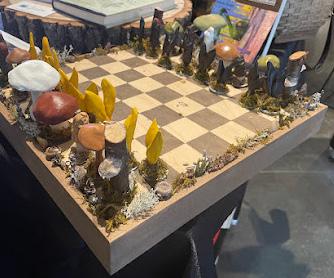

The legacy artist kicked off her final tour in Montreal.
BY HOPE CORNELL CONTRIBUTOR
Even at 71 years old, Cyndi Lauper continues to prove that “girls just want to have fun.”
Lauper took the Bell Centre stage in Montreal on Oct. 18 for the first show of her Girls
Just Wanna Have Fun Farewell Tour, complete with fantastic musical performances, extravagant costume changes, and contemporary performance art.
The opening act was Montreal singer and songwriter Rêve, who wore a red jumpsuit and was accompanied by two backup dancers. Despite having laryngitis, she put on an elegant performance of original songs and covers.
Lauper’s setup included two sets of long screens behind and above the stage. Just before her entrance, they flashed bright colours and static, with images of Lauper over the years.
The show started with a bang as confetti shot up from cannons at the front of the stage, shooting different colours to form a rainbow. Lauper later apologized for the theatrics, saying she knew it was a little over the top: “But I wanted you to know you were at the right show!”
Midway through her first song, “She Bop,” she began playing the recorder. Twirling on one foot, she marched across the stage and sang at the top of her lungs, not just for the first songs but throughout the entire show. The singer’s energy was infectious and could be felt all the way to the last seats in the Bell Centre.
“I fought to have all different colour wigs and merch for cheap so that we could all have coloured hair tonight,” announced Lauper, explaining that “all the proceeds of those wigs go to the Girls Just Want to Have Fundamental Rights Foundation, giving women access to safe and legal abortions.”
Unsurprisingly, the “True
Colors” singer created an inviting and inclusive atmosphere of rainbows, love, and acceptance for her fans.
Artist and Concordia student Lauren McCarthy first heard Lauper’s music in the car with her mom. In one word, she described Lauper’s music as “unifying.”
“I didn’t think that so many young people listened to her music, so it was really cool to see how many people were at the concert with their moms,” she said.
Lauper’s costume changes were exciting, with reveals and funky touches reminiscent of a drag show. She had fun, crazy, and glamorous costumes that pushed gender binaries in fashion.
Some notable outfits included a silver and black V-shaped top with matching pants and a wild light turquoise wig, giving cyberpunk vibes. For “Iko Iko,” she wore a red jacket with a metal washboard vest, playing it like an instrument. She proclaimed in her Brooklyn accent: “People want ‘glamma!’” and
Concordia’s Directioners reminisce about One Direction following the death of one of its band members.
BY STEFANO REBULI MUSIC EDITOR
The untimely death of musician Liam Payne sent shockwaves around the world after he fell from the third-story balcony of his hotel room in Buenos Aires, Argentina, on Oct. 16. He was best known as one of the members of the British boyband One Direction (1D), which saw massive international success during the 2010’s before going on an indefinite hiatus in 2016.


she sure gave it.
During “Sally’s Pigeons,” a white sheet was intended to float above the square stage in the crowd by having air blown up at it. Unfortunately, this was the sole major setback of the night, as it often floated off the platform, entrapping the security and staff like fish in a net. Those same air cannons were later used on a long translucent rainbow fabric, which she held and waved around during “True
Colors” for a touching and impressive performance.
Lauper’s Montreal performance was a testament to good showmanship. All she needs to have fun is a mic and an audience. The confetti, fancy screens, elaborate costume changes, and performance art were all for her fans, because she wanted them to have just as much fun.
The sudden breaking news shocked many, marking the end of an era for an entire generation of fans who devoted a large part of their childhood to the band.
“I opened X and saw it and instantly thought it was fake. I was in shock,” said thirdyear psychology student Samantha Vizzi.
“I
only really felt it the next day when it was the first thing I thought about when I woke up. My whole life and all of my interests were wrapped up in
One Direction ever since I was really young.”
The news generated a wide outpour of outreach and support towards supporters of the band, mostly from their friends and family.
“I found out about the news because all my friends texted me and called me. I honestly
think fewer people would’ve FaceTimed me if a member of my family had died,” said Malou Le Besq, a fourth-year political science major.
The 1D fandom was hugely prominent online during the band’s heyday, fostering a global sense of community through numerous fan pages. Fans took this unexpected event as an opportunity to come together, reunite, and collectively mourn.
The grieving process, however, was bittersweet and nuanced for many fans, given the numerous accounts and allegations of abuse leveled against him by his ex-girlfriend, Maya Henry. He most recently faced backlash after she published a book about an abusive relationship “inspired by true events.” Payne’s history of abuse led many fans to be critical of him rather than fully sympathetic.
“I wasn’t proud of the person he was at the moment with everything that happened with his past relationships. I had already drifted away from him as a human being, but I was still attached to what he represented: the band, the music, and how it built me as a person,” said third-year communications student Maria Luisa Velez.
“Mourning an abuser in public is peak insensitivity,
even if you were a fan of him during your teenage years. Being sad that a boyband member you loved when you were younger died in private is fine and understandable, but taking it to public spaces is intolerable,” added Le Besq, who emphasized their sympathy towards Henry.
Fans have mostly grappled with Payne’s sudden passing by revisiting One Direction-related media. While certain lyrics have taken upon new meanings, revisiting photos and videos of the band has been a source of closure for many, allowing them to relive the good times.
“I remembered their concert in Singapore,” said Hannah Bendel, third-year communications major. “I dragged my mom because I was too young to go alone, and I spent the entire time standing and screaming at the top of my lungs. Now that [Payne] died, it reminds me why I loved them so much as a young girl.”
Payne’s death not only marked the loss of a singer, but an unexpected end to the One Direction saga, leaving many with a void where their childhood was once contained.
“It doesn’t affect me that much, but my inner child is crying,” said Bendel.

Alter egos have long allowed musicians to break free from expectations, exploring new sounds and identities.
BY SAFA HACHI CONTRIBUTOR
With Halloween just around the corner, people prepare to embody new personas for one night. It’s a time for creativity to flow freely and for us to step into the shoes of someone different. While this transformation is temporary for most, some artists live in this space year-round, adopting alter egos as a core part of their creative expression.
One of the most iconic performers to master this was the late Daniel Dumile, better known as MF DOOM, the rapper who donned a metal mask to symbolize limitless artistic identity.
Dumile has released music under several other aliases, such as Viktor Vaughn and
King Geedorah. These personas allowed him to navigate various musical styles, sampling everything from comic book lore to pop culture references.
His ability to weave intricate storylines into his music, specifically inspired by Marvel’s Doctor Doom, adds depth to his work.
DOOM also brought his persona to life by donning a signature gladiator
mask inspired by Doctor Doom, a character scarred in a lab accident who hid his imperfection behind a mask due to his immense vanity and desire for control. The connection between Dumile and the character made the mask not just a visual emblem but a statement about identity and the relationship between artist and audience.
DOOM’s philosophy was that music should speak for itself, creating a
deeper connection with listeners. He was known for sending look-alikes to perform, emphasizing that the experience was about the art, not the man behind the mask.
As he explained to HipHopDX: “I’m a director as well as a writer... If you’re coming to a DOOM show, don’t expect to see me, expect to hear me.”

The mask was more than a visual gimmick; it was a tool that allowed him to experiment with new sounds and personas without being tied to a single identity.
Similarly, Tyler, The Creator, who draws inspiration from DOOM, has used different characters to rap about certain topics.
The Los Angeles rapper’s early albums included personas that served as a gateway into his thoughts and emotions: Wolf Haley and Ace the Creator allowed him to channel frustration and trauma, while Dr. TC, acting as a therapist, guided listeners through his introspective struggles.
Tyler has frequently fabricated personas to usher in a new sound and aesthetic, continuing the trend with his most
recent effort, CHROMAKOPIA.
“The way Tyler channels his personas with each album is amazing,” said Yasmina May Hafiz, a fourth-year communications and cultural studies major at Concordia. “You don’t know who he is going to be next, and that unpredictability is what makes his music so exciting.”
An alter ego can also serve as a means for artists to explore new sides of themselves, as Beyoncé did with her alter ego, Sasha Fierce. Born during the making of her song “Crazy in Love,” Sasha Fierce gave Beyoncé the confidence to embrace a bolder, more fearless stage presence as she transitioned into her solo career.
“Beyoncé used Sasha Fierce to fully embody her most powerful self, and I do the same,” said Luke Lopez, a third-year sociology major. “It’s not about being someone else but becoming the best version of yourself.”
Alter egos can provide a creative freedom that fuels true artistry. They blur the lines between reality and performance, much like the way Halloween invites us to embrace new identities — even if just for one night.
The Concordia indie band put on a classic rockinspired show at the Blue Dog.
BY RYAN PYKE ASSISTANT MUSIC EDITOR
Montreal-based indie rock band Tulipface performed for a packed bar at the Blue Dog Motel on St. Laurent Blvd. on Oct. 24.
The show had free admission, making it more accessible for students. The group was in good spirits before the show.
“Every time we play a show, we’re a little better, so it’s exciting to just get out there again,” said Oliver King, the main vocalist and one of the guitarists in the band.
King is a third-year music major at Concordia. He said he was most looking forward to gathering with his band to perform for a live audience.
King mentioned being worried about the sound — all the music went directly through on-stage amps rather than being hooked up to loudspeakers.
“It’s all just coming from the stage, which is pretty rock-androll, but it means that we’re sort of flying by the seat of our pants,” said King.
Vaughn Newey, 20, is the group’s drummer. He works at Thomson House on the McGill University Campus. He’s been playing with Tulipface for the roughly year-and-a-half they’ve been active.
“I’m just looking forward to playing live. It’s a great feeling,” said Newey.
The band has done around a dozen shows so far. They got started in Ottawa but later moved to Montreal. It was here where they incorporated their fourth member, Emile Côté, a third-year film production major at Concordia and the other guitarist for the band. He is responsible for the atmospheric qualities of the music.
“I have a lot of effects and pedals to create the soundscape of the band,” he said.
Even though there were concerns about the sound, everyone was excited to play at the bar. Côté linked the Blue Dog Motel’s appeal to its minimalist aesthetic. Some bars, he said, put a lot of pressure on the bands that play to make more money. Since this was a free show, they don’t have that incentive.
Christopher Colaco, 20, plays the bass and provides vocals for some of Tulipface’s songs. As a former music instructor at the Nepean School of Music in Ottawa, he has experience with

numerous instruments.
He explained that the size of the venue is a double-edged sword. According to Colaco, it is very small but that it “gives an element of closeness.”
Two bands performed alongside Tulipface: The Satisfactory and Mr Patterson. They all had a very classic rock feel with their gritty vocals and occasional mic feedback sounding through the cramped bar.
King’s vocals were loud and powerful. His lung capacity was
on full display as he sustained intense notes for long periods of time. Their manager, Sophia Godoy, organized this event. She is a third-year communications major at Concordia. Taking over Tulipface’s management in the summer of 2024 became her first band management gig. From booking all their appearances to networking, she describes her job as “trying to make them something.”
Though the instrumentals were blaring, they also had a sort of romantic, emotional quality. It is evident that Tulipface’s songs are a product of the group’s passion for music and the community it brings.
“We just wanted to take the opportunity to gather and have a good time,” said King. “That’s one of the things that music does; one of the reasons why we do it.”
TikTok’s cycle of fleeting trends, promoting overconsumption, loss of individuality and the pressure to keep up.
BY SAFA HACHI CONTRIBUTOR
As TikTok continues to dominate our digital landscape and daily lives, the pressure to keep up with ever-changing micro-trends raises questions about our over-consumption and collective identity.
TikTok, launched initially as Musical.ly in 2014, has become a global sensation, transforming the way we consume content. What started as an app for dancing and lip-syncing videos has evolved into a massive platform that appears to be a central hub of creativity.
However, as TikTok’s popularity has skyrocketed, so has the pace at which trends come and go.
My use of TikTok peaked during the early days of the COVID-19 lockdown. It became more than just a form of entertainment — it became a virtual refuge where we could escape the confinement of our homes, bond over shared pandemic ex-
periences, and fill the void left by the isolation of lockdown.
I admit that scrolling endlessly felt like a much-needed break from reality, making the seemingly never-ending days go by in the blink of an eye.
Even as the world began to return to normal, our relationship with TikTok stayed the same. The endless scrolling and content consumption didn’t slow down but increased. The micro-trend culture, where something is in one week and out the next, only intensified as we sought out constant stimulation.
Dating tips, diet plans, and medical advice are now available on TikTok, catering to our desire for quick solutions and instant gratification.
This need for “fast content” is a reflection of how we are currently living our lives.
It feels like we are constantly rushing to keep up. TikTok mirrors our fast-paced world, and it’s easy to feel like you need to catch up if you’re not constantly participating.
The platform has also allowed brands and businesses to capitalize on this never-ending
trend cycle, profiting off our insecurities and our fear of missing out.
It’s no surprise that in today’s state of consumerism, brands have begun to quickly latch onto these trends, constantly pushing products so that we barely have time to question if we want or need them.
TikTok has also dominated our daily lives, not just our online ones. With millions of people across the globe contributing to trends or lifestyle changes such as 75-hard or TikTok shop hauls, it feels like the app is an endless source of content that shapes every aspect of our lives.
TikTok has changed the way we engage with social media, from viral fashion hacks to livestreamed therapy sessions. It’s as though our real lives need to mirror the fast-paced nature of the app, and if you don’t keep up, you risk getting left behind.
With so much content at our fingertips, we’re losing a sense of self, and originality is quickly lost with the ever-changing algorithm. Our identities are now shaped by fleeting moments on a screen. In this endless pursuit of what’s “in,” we risk becoming disconnected from who we are, leading us to sacrifice our indi
viduality in a world that constantly demands more from us.
My version of “Thanksgiving”
BY SASKIA WODARCZAK OPINIONS EDITOR
Food unites us in so many ways and can act as a bridge between us and our ancestors. It connects us with various backgrounds and allows us to experience cultures using the five senses.
I grew up eating a wide array of different cuisines. My mother was born in Suva, Fiji, and her maternal grandfather was from Bihar, India.
In contrast, my father is German-Canadian; his parents were born and raised in Germany, and he, in Richmond, B.C. His maternal side is German to the core, but his paternal Oma and Opa were German-Alsatian and Polish, respectively. His Oma’s father was born in the Basque country in the South of France.
It wasn’t until this summer that I truly began to feel connected with the European side of my family. My parents and I went on a Rhine river cruise

where the food served was typically associated with the regions we were visiting in France and Germany. The chef even made a German-themed lunch one day, with schnitzel, bratwurst, spätzle, to name a few.
It was nice seeing my dad embracing the culture he comes from, and I started calling him “German Erwin” as a joke. It was bittersweet seeing him im-
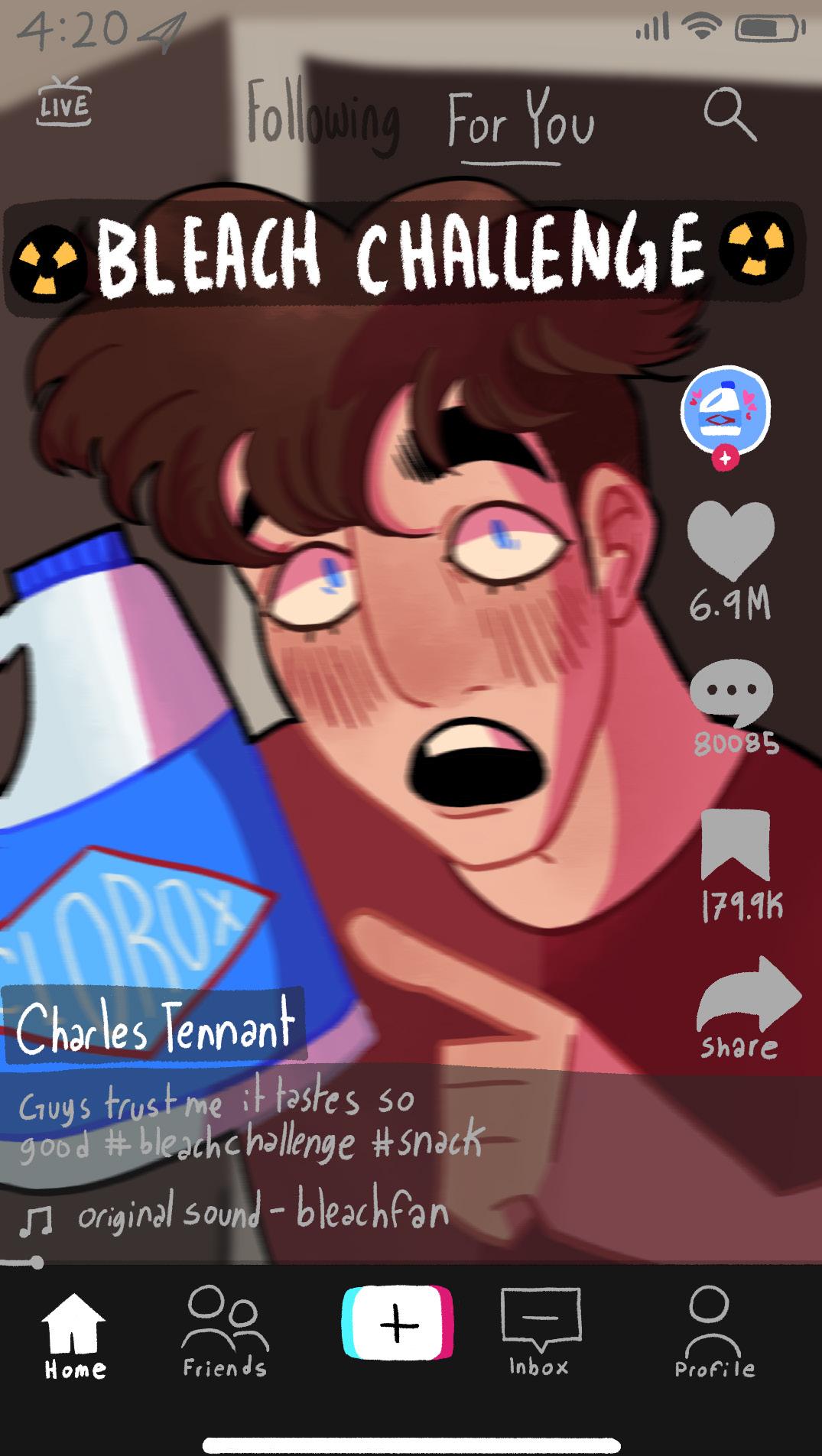
mersing himself in his German background. It’s an added bonus that “German” rhymes with his name.
Between the food, the language, and the country overall, experiencing those things opened up a totally new side to him that I’d never seen before. It might’ve helped him heal a bit, too.
Indian food is something that
I cook whenever I can, but I’ve never tried my hand at anything from my European side. So, I thought I’d challenge myself and make a Thanksgiving meal with five different dishes, each representing a country that my (known) ancestors are from.
The concept of being thankful for what you have at Thanksgiving is great, but I found this to be a unique and personal way to show gratitude to my ancestors and commemorate the places I come from.
Thus, I set out to curate my array of dishes, trying to keep it to ingredients that I’d typically buy for myself. The only things I splurged on were a huge can of Germany-imported sauerkraut, and Emmentaler cheese, which reeked to the high heavens.
Growing up, I’d seen my dad order jägerschnitzel (breaded pork cutlet) whenever it was an option on a menu, especially at German restaurants, so I settled on a German Jägerschnitzel with mushroom gravy and mashed potatoes as an entree. The biggest challenge was dehydrating a porcini mushroom in my oven — it took forever
and shrank to about one third of its original size, which was such a disappointment.
My boyfriend, and both our moms (via phone), helped me make samosas, which actually turned out super good. Sadly, we ate all but two the day before the rest of the food.
I made a Polish Paszteciki z Kapustą i z Grzybami (sauerkraut and mushroom pies), and along with that was an Alsacian Flammkuchen, which is essentially a flatbread with creme fraiche, bacon, onions, and cheese. For dessert, I made some mini Basque cakes with a jam filling.
I’d definitely say that this was a huge success. I think that it was therapeutic in a way, especially since all of the dishes turned out quite well considering it was my first time making all five of them.
I felt oddly at home this summer, travelling in and around Germany. Together, that trip and this meal allowed me to forge a connection I didn’t even know could exist.

Making haunted houses more accessible to everyone.
BY DANYLO PERKOV
ASSISTANT OPINIONS EDITOR
Haunted houses are a fun (and scary!) way to bring communities together, letting people of all ages experience an adrenaline rush and allowing participants to pretend they’re in a Scooby-Doo episode.
However, more can be done if we want to make haunted houses more accessible for all, mainly for people with disabilities.
Most of us are aware of visible disabilities; a person in a wheelchair, a prosthetic arm, or a cane, to name a few. Despite there being 1 billion people worldwide with an invisible disability – disabilities that are not immediately apparent when looking at someone –they are rarely accounted for.
Considering I’m not an expert on the subject, I’ve asked my friend Val, who is involved in raising disability awareness, for some help to dream up an accessible haunted house.
First and foremost, obstacles on the ground and stairs are things to avoid when designing the floor plan. It becomes much easier for people with movement disabilities to move around if no obstacles are present.
Accommodations such as ramps next to stairs are more obvious, but objects like exposed cables should also be re-routed to allow for smooth sailing across the floor. Raised door frames and other obstacles, no matter how small, must be taken care of.
It is important not to generalize disabilities and to have options for general modifications.
For some, adrenaline rushes need to be received in small doses, so separating your haunted house into sections that take only a couple of minutes to complete would be a good solution to allow the person experiencing it some rest before the next room.
Make sure certain scare tactics don’t rely too much on sound. A person with hearing problems might simply miss it. If you do need to display some information via an audio narration, make sure to include a transcript that can be easily ac-

cessed. For example, instructions for what room to go into next, or a scary noise being accompanied by a visual jumpscare, such as a flash of light. The exact opposite argument can be made for people with impaired vision. It’s hard to get spooked when you can’t see, so if you’re designing a haunted house with different customization options, make sure one
of them has audio that can still deliver the adrenaline.
I have experienced many haunted houses where actors will jump out at the visitors for a surprise effect — it’s where most of the fun lies.
However, fun is required in moderation for some. It might be a good idea for haunted houses to offer participants some sort of a bracelet or other
identification for the actors to know what participants are comfortable experiencing. By offering the option to know beforehand how the haunted house will scare its participants, you ensure nothing will trigger specific fears and traumas.
But ultimately, make sure it doesn’t spoil anything for anyone uninterested in spoilers!
“Mom, I’m never going to get an internship”
Struggles and triumphs of getting an internship in a recession.
BY NOUR ADNAN CONTRIBUTOR
I spent the better parts of 2023 and 2024 searching for an internship, swimming against the largest wave of tech layoffs in recent history. I pulled all-nighters, applying to job after job for months to no avail.
My friends and I hid which companies we were applying to out of fear of losing an opportunity to the other. Some of us started thinking about extending graduation to excuse our joblessness. The first look at our careers was not hopeful.
Tech internship culture also feels like a battlefield. Having to impress phoney recruiters with a corporate act, hoping for a job offer, or adding people on LinkedIn that I will never speak to again makes me physically cringe.
The industry is even worse; it’s becoming increasingly difficult to avoid complicity in the military-industrial complex or stealing people’s time, money, and data with no accountability (I’m looking at you, Zuckerberg). So, what was I to do now?
With that question in mind, I booked a meeting with a “career mentor” through LinkedIn for advice. I was told that, with my
prerogatives, if I did not grind in the industry the way others were, I would have to “lower my expectations” about the offers I would get.
I was insulted and discouraged. I care and strive to produce good and meaningful work, but
refuse a life in which my job consumes or corrupts me, turning me into a corporate robot.
I realized then that I did not have to follow all the conventional rules of career-building. This acceptance radically changed my outlook and my career-pursuit style. From that point on, I sought out opportunities that aligned with my life philosophy in ways that felt more holistic and genuine to myself.
I stopped attending “networking events” simply because they were advertised as such. Instead, I went to conferences and events that genuinely interested me, which led me to connect with like-minded individuals and sparked meaningful conversations about mutual

or differing curiosities.
I also picked up a side project. The truth is, a personal side project, which can be as simple as a certification in an art medium, skill, or trade, is necessary to supplement your education. Mine was a C# certification with Microsoft. I started sometime in 2023 and abandoned it halfway through. I kept it on my resume, incomplete as it was.
To my surprise, it’s what led my current company to hire me this September. They were impressed that a student
had already learned the C# programming language since it’s not taught in the curriculum, setting me miles ahead of other applicants.
Some rules, however, still applied: I signed up to as many job boards as possible with every single imaginable notification set: “computer science,” “software engineer/ developer,” “remote/hybrid/ in-person,” “Montreal/Quebec/ BC/Ontario.”
I still solve LeetCode problems and talk to phoney recruiters, but I now bring friends
along and make a memory out of it.
The internship journey is different for everyone, and you might struggle more than others, but while you wait for one, your life is still happening. So don’t fret and wish it away. Pick up a personal project you enjoy, attend events that pique your interest, and bring some friends with you. Eventually, an internship will string along, and you’ll realize that the struggle was (maybe) worth it all along.


Editor-in-Chief: MARIEKE
Creative Director: FINN GROSU creative@theconcordian.com
Managing Editor: EMMA MEGELAS managing@theconcordian.com
News Editors: J EREMY COX, FÉLIXANTOINE BEAUCHEMIN
News Assistant: JIA SCHOFER
Sports Editor: MATTHEW PISCINA
Sports Assistant: MATHILDE COLLS




Opinions Editor:
Opinions Assistant: DANYLO

Video Editor:
Video Assistant: DIEGO CERVANTES
Podcast Editor: SEMIRA KOSCIUK
Production Manager:
Music Assistant: Ryan Pyke
Arts & Culture Editor: MAYA RUEL
Copy editors:
Business Manager: LITHUN SARKER
Distribution: GUY LANDRY
Printing: H EBDO-LITHO
Board of Directors: